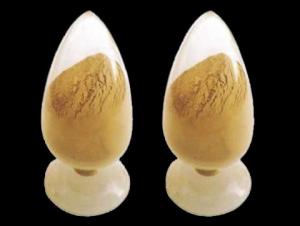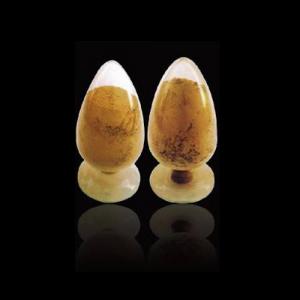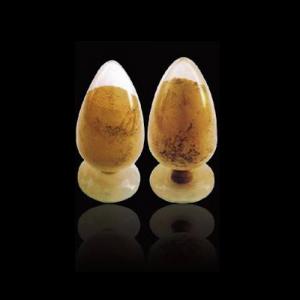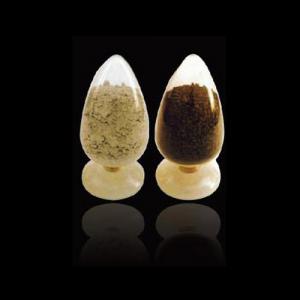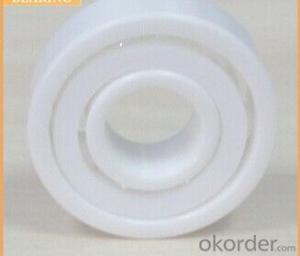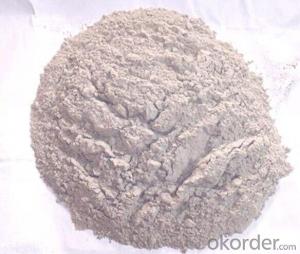Alumina-Spinel Castable for Ladle
- Loading Port:
- China Main Port
- Payment Terms:
- TT or L/C
- Min Order Qty:
- 2 MT m.t.
- Supply Capability:
- 5000 Tons Per Month m.t./month
OKorder Service Pledge
OKorder Financial Service
You Might Also Like
General Information of Alumina-Spinel Castable for Ladle
ALRE alumina-spinel castable for ladle made strictly as per international standards, is known for its long operating life, excellent corrosion resistance and high refractoriness.
Technical data of Alumina-Spinel Castable for Ladle
Item | Alumina spinel castable | ||||
Al2O3 | % | ≥ | 72 | ||
MgO | % | ≥ | 10 | ||
CaO | % | — | |||
SiO2 | % | ≤ | 9 | ||
SiO2+ Fe2O3+ Al2O3 | % | ≤ | |||
Bulk density ≥ | g/cm3 | — | |||
C.C.S. (MPa) ≥ | 110℃×24hrs | 90 | |||
1500℃×3hrs | 100 | ||||
M.O.R.(MPa) ≥ | 110℃×24hrs | 11.5 | |||
1500℃×3hrs | 11.5 | ||||
Refractoriness (℃) ≥ | — | ||||
Grain size (mm) ≤ | — | ||||
Permanent linear change | 1500℃×2hrs | -0.2~0.35 | |||
1500℃×3hrs | — | ||||
Life time (hr) | — | ||||
Production line and Packing of Alumina-Spinel Castable for Ladle
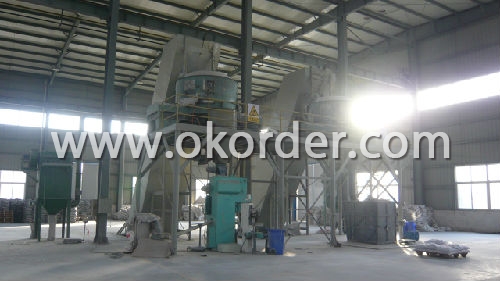

Feature of Alumina-Spinel Castable for Ladle
Long operating life
Easy execution and mending
Excellent corrosion and scouring resistance of iron steel
Application of Alumina-Spinel Castable for Ladle
ALRE alumina-spinel castable could be used widely for lining of ladles in steel and iron industry.
- Q:How do monolithic refractories contribute to the overall efficiency of steel ladle operations?
- The overall efficiency of steel ladle operations can be greatly improved by the use of monolithic refractories. These refractories, which are engineered materials installed as a single structure within the ladle, offer numerous advantages that directly contribute to operational efficiency. One key benefit of monolithic refractories is their exceptional thermal insulation properties. They have a low thermal conductivity, meaning they are effective at retaining and containing heat within the ladle. This insulation helps to maintain the desired temperature of the molten steel, preventing heat loss during transportation and reducing the need for frequent reheating. By minimizing heat loss, monolithic refractories enable a more efficient use of energy resources, resulting in cost savings and improved productivity. Moreover, monolithic refractories possess a high refractoriness, meaning they can withstand high temperatures without losing their structural integrity. This is crucial in steel ladle operations, where extreme temperatures are encountered during the steelmaking process. The high refractoriness of monolithic refractories ensures that they can withstand the intense heat and avoid any damage or failure of the ladle lining. This durability translates into reduced downtime and maintenance requirements, leading to increased operational efficiency. Additionally, monolithic refractories offer excellent resistance to chemical attack. The ladles used in steelmaking come into contact with various corrosive substances, such as molten metals, slag, and fluxes. The chemical resistance of monolithic refractories prevents them from reacting with these substances, ensuring the integrity and longevity of the ladle lining. This resistance to chemical attack reduces the need for repairs and replacements, minimizing downtime and improving overall operational efficiency. Furthermore, the installation of monolithic refractories is relatively quick and straightforward compared to traditional brick linings. This ease of installation saves time and labor costs, allowing for a faster turnaround between ladle operations. It enables steel manufacturers to optimize their production schedules and enhance overall operational efficiency. In conclusion, monolithic refractories play a significant role in improving the efficiency of steel ladle operations. Their thermal insulation properties, high refractoriness, resistance to chemical attack, and ease of installation all contribute to enhanced energy efficiency, reduced downtime, and increased productivity. By choosing to use monolithic refractories, steel manufacturers can achieve optimized ladle performance and ultimately improve their steelmaking process as a whole.
- Q:How do monolithic refractories withstand high temperatures in iron and steel processing?
- Due to their unique composition and design, monolithic refractories have the capability to endure high temperatures in iron and steel processing. Unlike refractories composed of multiple layers, these refractories are made from a single, solid material, which grants them superior thermal conductivity and resistance to thermal shock. One crucial factor that enables monolithic refractories to withstand high temperatures is their high melting point. Typically composed of materials like alumina, magnesia, silica, or zirconia, these refractories possess melting points that exceed the temperatures encountered in iron and steel processing. This ensures that the refractories do not deteriorate or melt when exposed to such extreme temperatures. Additionally, monolithic refractories exhibit excellent thermal insulation properties. With low thermal conductivity, they effectively impede heat transfer from the hot molten metal or gases to the surrounding environment. This insulation property helps sustain high temperatures within the processing units, ensuring efficient and effective iron and steel production. Another significant aspect contributing to the ability of monolithic refractories to withstand high temperatures is their resistance to thermal shock. In iron and steel processing, rapid temperature changes are frequent, which can lead to cracking or spalling in traditional refractories. However, monolithic refractories possess a more homogeneous structure and greater flexibility, enabling them to endure these sudden temperature fluctuations without significant damage. Apart from their composition, the installation method of monolithic refractories also plays a role in their ability to withstand high temperatures. Typically, these refractories are installed using a technique called gunning or shotcreting, where a mixture of refractory material and water is sprayed onto the surface, forming a dense and solid lining. This installation method ensures a strong bond between the refractory and the substrate, enhancing the overall strength and durability of the lining. Overall, monolithic refractories can withstand high temperatures in iron and steel processing due to their high melting point, excellent thermal insulation properties, resistance to thermal shock, and proper installation techniques. These refractories are essential in maintaining the integrity and efficiency of the processing units, facilitating the production of high-quality iron and steel products.
- Q:How do monolithic refractories withstand high temperatures and thermal cycling?
- Monolithic refractories withstand high temperatures and thermal cycling due to their unique composition and structure. They are made from a single piece or material, which eliminates joints or seams that could be vulnerable to thermal stress. Additionally, they are designed with a high thermal conductivity and low thermal expansion, allowing them to expand and contract without cracking or spalling. This enables them to maintain their integrity and mechanical strength even under extreme temperature fluctuations, making them highly durable and suitable for applications in industries such as steel, cement, and petrochemical.
- Q:How are monolithic refractories used in the repair and maintenance of ladle and tundish covers?
- Due to their excellent thermal resistance and durability, monolithic refractories are commonly utilized for repairing and maintaining ladle and tundish covers. These covers play a crucial role in the containment of molten metal and the prevention of heat loss during the steelmaking process. When exposed to high temperatures and thermal cycling, ladle and tundish covers can undergo wear and tear, resulting in cracks, spalling, or even complete failure. This is where monolithic refractories come into play. Monolithic refractories are refractory materials that are not shaped and can be easily molded and applied to damaged areas of ladle and tundish covers. They can be cast, gunned, or sprayed onto the surface, enabling quick and efficient repairs. Typically, these refractories consist of a matrix material, such as alumina, silica, or magnesia, along with various additives and bonding agents. The specific composition depends on the application requirements and severity of operating conditions. The repair process begins by identifying the damaged areas of the ladle or tundish cover. Any loose or damaged refractory material is removed, and the surface is prepared for the application of the monolithic refractory. This may involve cleaning, roughening, or even preheating the surface, depending on the specific requirements. The monolithic refractory is then mixed with water or a suitable binder to achieve a workable consistency. It is then applied to the damaged areas using the appropriate method, such as casting or spraying. After application, the refractory material is allowed to dry and cure, typically through controlled heating. Once cured, the monolithic refractory forms a robust and durable lining that can withstand the high temperatures, thermal cycling, and chemical reactions occurring during ladle and tundish operation. It provides excellent thermal insulation, minimizing heat loss and reducing energy consumption. Moreover, monolithic refractories exhibit superior resistance to slag, metal penetration, and erosion, ensuring extended service life for ladle and tundish covers. They also possess good thermal shock resistance, enabling them to endure rapid temperature changes without cracking or spalling. In conclusion, monolithic refractories are indispensable for repairing and maintaining ladle and tundish covers due to their thermal resistance, durability, and ease of application. Their ability to withstand high temperatures, thermal cycling, and chemical reactions ensures the integrity and efficiency of ladle and tundish operations in the steelmaking industry.
- Q:What are the typical applications of monolithic refractories in blast furnaces?
- Due to their unique properties and applications, monolithic refractories find extensive use in blast furnaces. These refractories consist of a single, uniform material that can be shaped and installed in various forms without the need for joints or seams. This particular characteristic makes them highly suitable for lining and safeguarding the different zones of a blast furnace. One common use of monolithic refractories in blast furnaces is for lining the hearth, which is the lowermost part of the furnace where molten iron and slag collect. Monolithic refractories are employed to create a sturdy and heat-resistant lining capable of withstanding the extreme temperatures and chemical reactions that occur in this region. Another frequent application is the lining of the bosh, the transitional zone between the hearth and the blast furnace's stack. The bosh is subjected to elevated temperatures and mechanical stresses resulting from the movement of burden materials. To ensure its longevity and efficiency, monolithic refractories with high thermal shock resistance and abrasion resistance are utilized. Monolithic refractories are also utilized for lining the stack and the tuyere area. The stack refers to the vertical portion of the furnace where iron ore reduction takes place, while the tuyere area is where hot air blast is injected into the furnace. Both these areas necessitate refractories capable of withstanding high temperatures, chemical reactions, and mechanical stresses. Moreover, monolithic refractories find application in the repair and maintenance of blast furnaces. Due to the harsh conditions inside the furnace, the lining may deteriorate over time. Monolithic refractories can be easily applied as patching materials to restore the lining's integrity and extend the furnace's lifespan. In summary, monolithic refractories play a crucial role in blast furnaces by lining the hearth, bosh, stack, and tuyere area, as well as facilitating repairs and maintenance. These refractories offer exceptional thermal shock resistance, abrasion resistance, and durability, making them indispensable for the efficient operation of blast furnaces in the iron and steel industry.
- Q:In iron and steel industry, the main raw materials for blast furnace ironmaking are iron ore, coke and limestone. What's the use of limestone here?
- CaCO3 CaO + CO2 =C = 2CO + CO2Fe2O3
- Q:How do monolithic refractories improve the efficiency of ladle and tundish preheating furnaces?
- Monolithic refractories play a crucial role in improving the efficiency of ladle and tundish preheating furnaces. These refractories are made from a single material and are designed to be easily installed, repaired, and replaced, making them highly versatile and cost-effective. One of the main ways monolithic refractories contribute to the efficiency of these furnaces is through their excellent thermal insulation properties. These refractories have low thermal conductivity, which means they can effectively retain heat and prevent it from escaping the furnace. This insulation capability minimizes heat loss and ensures that the preheating process is carried out efficiently, reducing energy consumption and costs. Furthermore, monolithic refractories have high thermal shock resistance, which is crucial in ladle and tundish preheating furnaces. These furnaces are subjected to rapid temperature changes when molten metal is poured into them, and this can cause conventional refractories to crack or fail. However, monolithic refractories are designed to withstand thermal shock, ensuring that they remain intact and maintain their insulating properties even under extreme conditions. This durability enhances the overall efficiency of the preheating process by reducing downtime and maintenance requirements. Moreover, monolithic refractories provide a smooth and uniform lining surface, which helps to improve heat transfer within the furnace. The absence of joints or seams reduces the risk of heat leakage and ensures that heat is evenly distributed throughout the lining. This promotes uniform heating of the ladle or tundish, allowing for more efficient preheating and better control of the temperature. In summary, the use of monolithic refractories in ladle and tundish preheating furnaces results in improved efficiency due to their excellent thermal insulation properties, high thermal shock resistance, and ability to provide a smooth and uniform lining. These refractories help to minimize heat loss, reduce energy consumption, and enhance the overall performance of the preheating process.
- Q:How do monolithic refractories contribute to the overall efficiency of ladle transfer processes?
- The efficiency of ladle transfer processes is greatly improved by the use of monolithic refractories. These refractories are made from a single, uniform material, making them easy to install and maintain. This feature reduces downtime during ladle transfers, ultimately increasing productivity. One of the ways in which monolithic refractories enhance efficiency is through their high thermal conductivity. Ladle transfers involve the movement of molten metal, which generates a significant amount of heat. Monolithic refractories have exceptional heat resistance, allowing them to withstand the extreme temperatures of the molten metal. This property prevents refractory failure and extends the lifespan of the ladle, resulting in more efficient and uninterrupted ladle transfer operations. Furthermore, monolithic refractories provide superior corrosion resistance. The corrosive nature of molten metal can cause considerable damage to ladles over time. However, monolithic refractories are specifically designed to withstand chemical attacks from molten metal, preventing the degradation of the ladle's integrity. Consequently, ladles lined with monolithic refractories have a longer lifespan and require less frequent replacement, leading to cost savings and improved efficiency. Another factor contributing to the efficiency of ladle transfer processes is the ability of monolithic refractories to conform to complex shapes and designs. Ladles come in various sizes and shapes, and monolithic refractories can be customized to perfectly fit the dimensions of the ladle. This precise fit minimizes heat loss and maximizes energy efficiency during ladle transfers. Additionally, monolithic refractories offer excellent mechanical strength and resistance to thermal shock. Ladle transfer processes involve the handling and movement of ladles, subjecting refractories to mechanical stresses. The exceptional mechanical properties of monolithic refractories ensure their durability and prevent cracking or spalling, reducing the risk of refractory failure and enhancing the efficiency of ladle transfer operations. In conclusion, the efficiency of ladle transfer processes is improved by the use of monolithic refractories due to their high thermal conductivity, corrosion resistance, precise lining fit, and excellent mechanical properties. These refractories enhance the durability of ladles, reduce downtime, and improve energy efficiency, resulting in cost savings and increased productivity in the steelmaking industry.
- Q:What are the key trends in the use of monolithic refractories in the iron and steel industry?
- One key trend in the use of monolithic refractories in the iron and steel industry is the increasing demand for tailored solutions. As the industry continues to evolve and become more specialized, there is a growing need for refractory materials that can be customized to meet specific requirements and challenges. Another important trend is the development of advanced monolithic refractories with enhanced performance characteristics. Manufacturers are constantly working on improving the properties of these materials, such as higher resistance to thermal shock, better thermal conductivity, and increased durability. This allows for improved efficiency and productivity in the iron and steel production processes. Additionally, there is a shift towards environmentally friendly refractory solutions. With growing concerns over sustainability and emissions, the industry is looking for refractory materials that have a lower carbon footprint and are made from renewable or recycled materials. This trend aligns with the broader push towards greener practices in the iron and steel sector. Overall, the key trends in the use of monolithic refractories in the iron and steel industry revolve around customization, performance enhancement, and sustainability. These trends are driven by the evolving needs of the industry and the desire to optimize production processes while minimizing environmental impact.
- Q:How are monolithic refractories recycled or disposed of at the end of their lifespan?
- Monolithic refractories at the end of their lifespan are typically recycled or disposed of through various methods. Recycling involves collecting the used refractory materials and processing them to remove any contaminants. The processed refractories can then be used as raw materials in the production of new refractory products. Disposal methods include landfilling in designated areas or utilizing waste-to-energy facilities to convert the refractories into energy. The choice between recycling and disposal depends on factors such as the condition of the refractories and the availability of recycling facilities in the area.
1. Manufacturer Overview |
|
|---|---|
| Location | Henan, China |
| Year Established | 2007 |
| Annual Output Value | Above US$ 200 Million |
| Main Markets | North America;Asia;Western Europe;Africa;Russia;Middle East |
| Company Certifications | ISO 9001:2008 |
2. Manufacturer Certificates |
|
|---|---|
| a) Certification Name | |
| Range | |
| Reference | |
| Validity Period | |
3. Manufacturer Capability |
|
|---|---|
| a)Trade Capacity | |
| Nearest Port | Tianjin |
| Export Percentage | 20% - 30% |
| No.of Employees in Trade Department | 10-20 People |
| Language Spoken: | English; Chinese |
| b)Factory Information | |
| Factory Size: | Above 150,000 square meters |
| No. of Production Lines | Above 10 |
| Contract Manufacturing | Installation guide, OEM Service Offered |
| Product Price Range | High; Average |
Send your message to us
Alumina-Spinel Castable for Ladle
- Loading Port:
- China Main Port
- Payment Terms:
- TT or L/C
- Min Order Qty:
- 2 MT m.t.
- Supply Capability:
- 5000 Tons Per Month m.t./month
OKorder Service Pledge
OKorder Financial Service
Similar products
New products
Hot products
Related keywords
